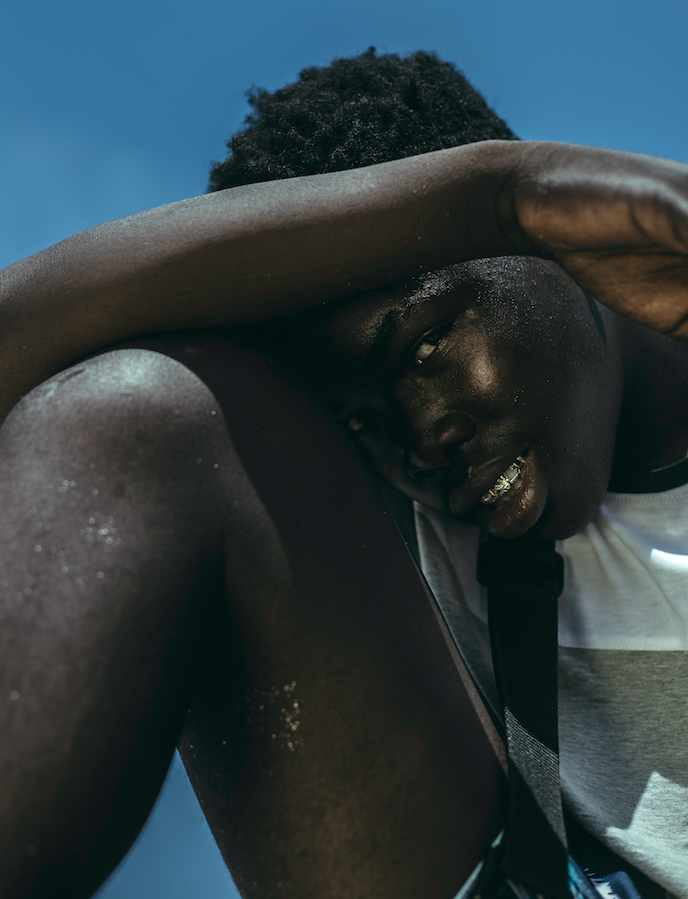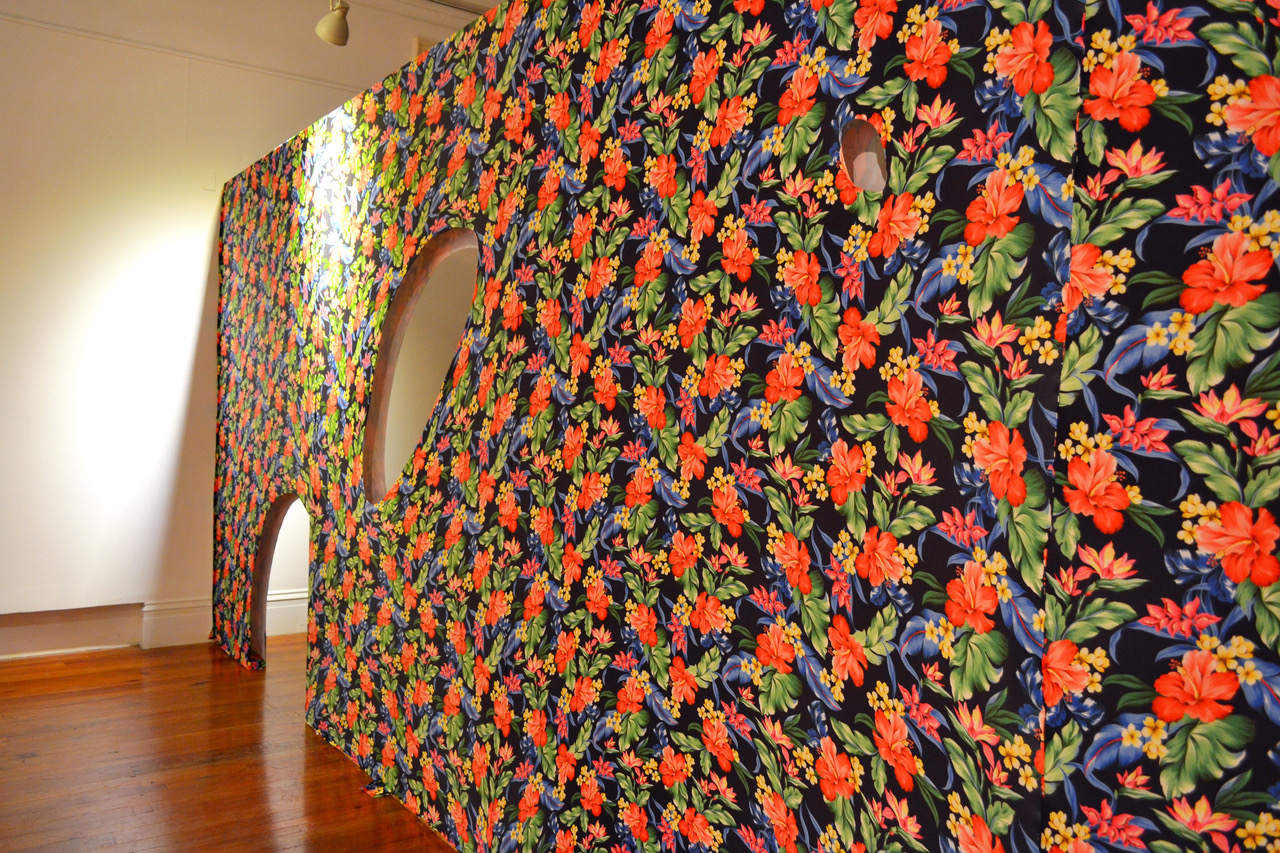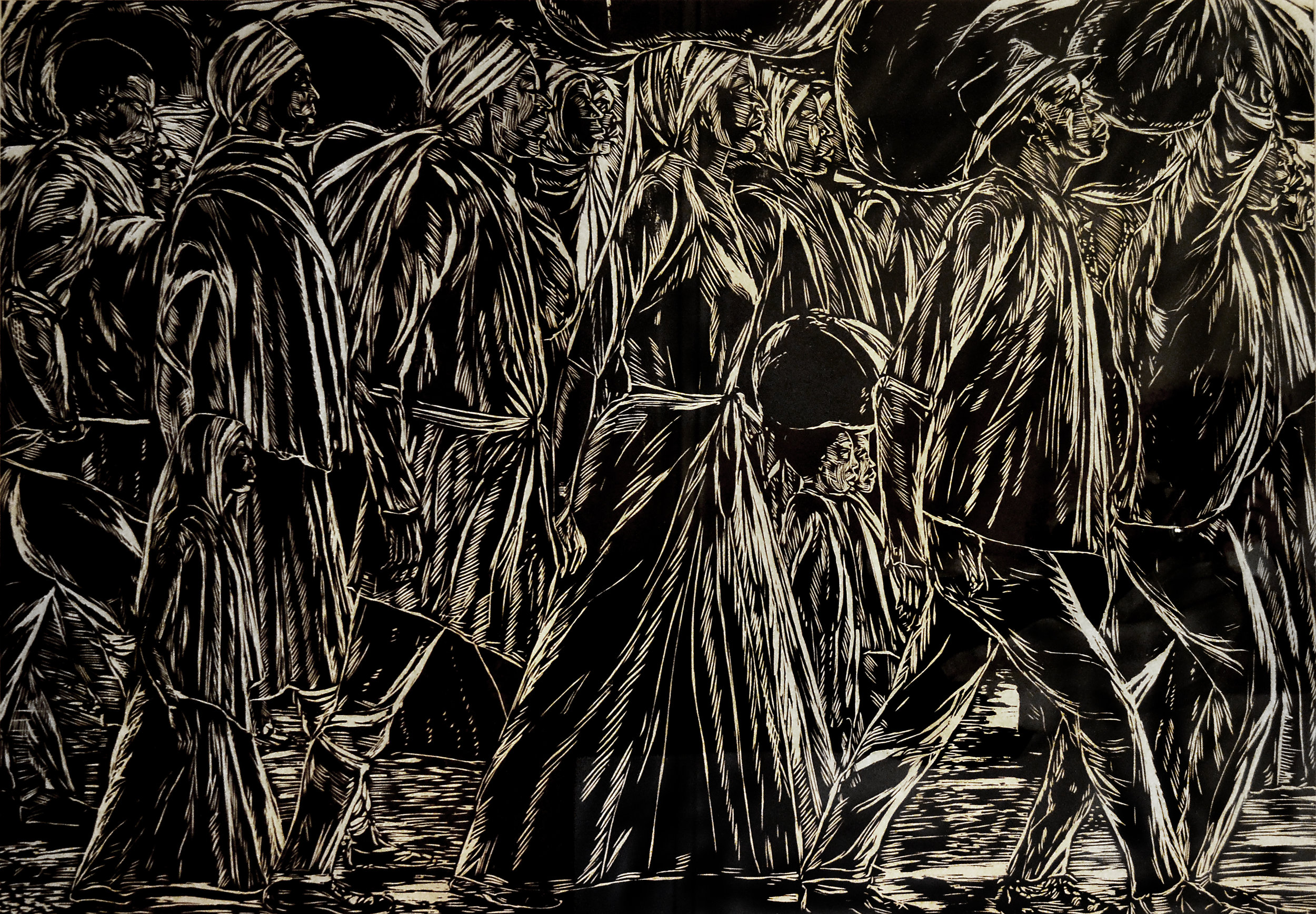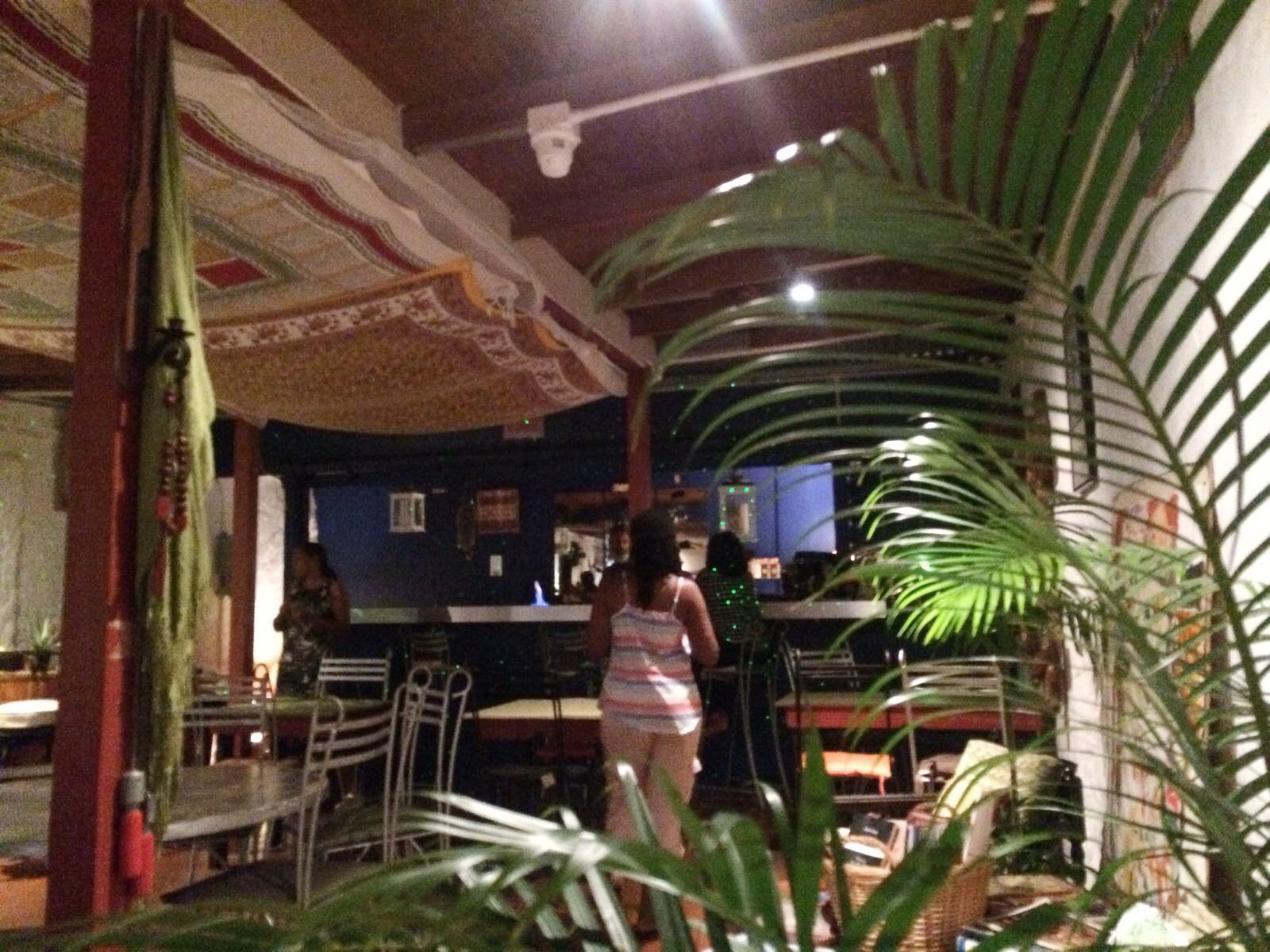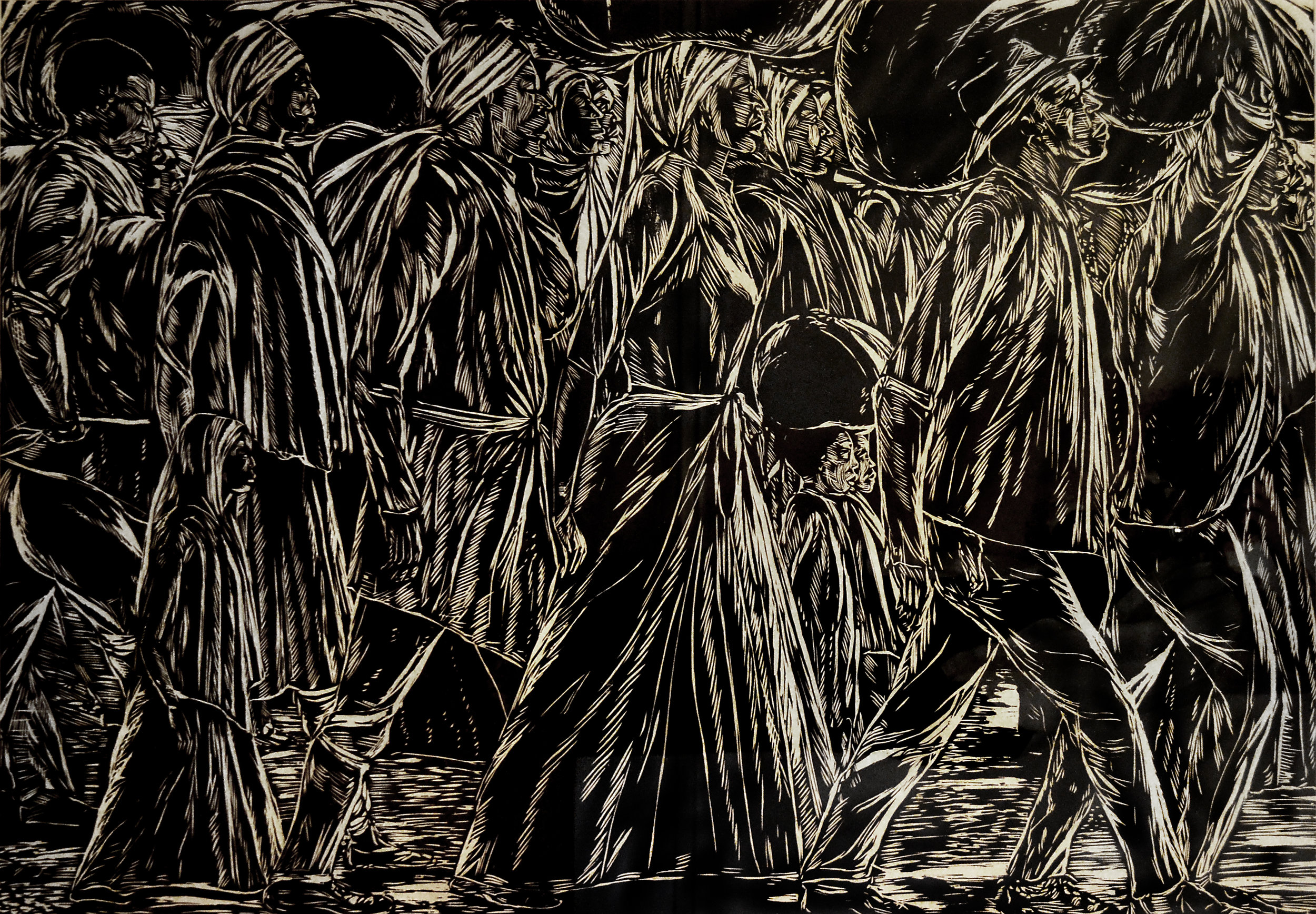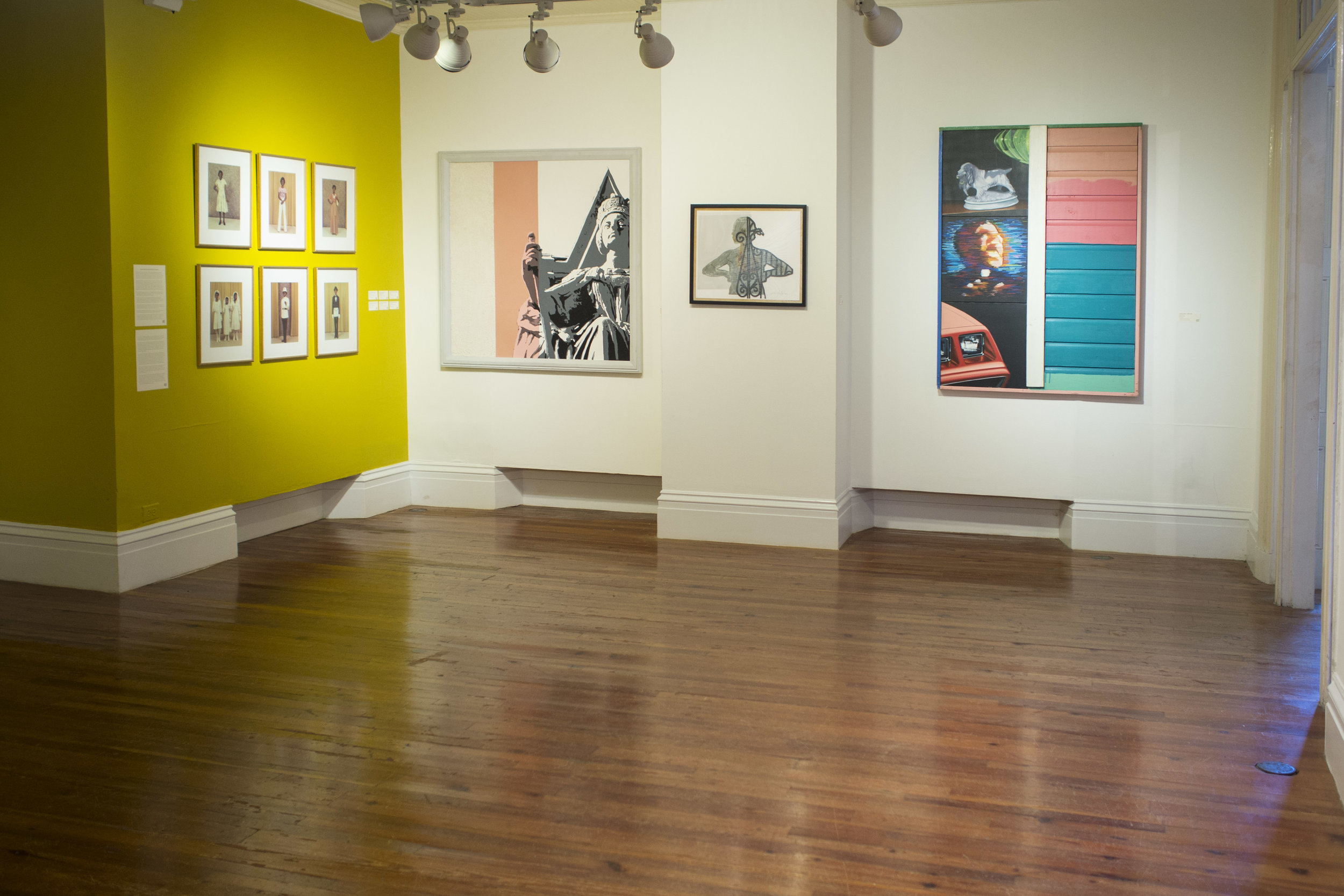Melissa Alcena’s solo show currently on view in the Project Space through December 3rd, “Some (Re)assembly Required,” speaks to this puzzle-piecing together and rebuilding and reclaiming of the chunks of softness that has been chipped away from Black men for so long.
Currently browsing: Stories
(Un)Monumental: How Do We Re-contextualise Historic Sculptures for Contemporary Life?
As we have seen in “Re: Encounter” artists can often speak to the idea of the monumental both in size and in content. Dede Brown presents ambiguous humanoid busts, absent and cut out of wood and masonite, which are suspended from the ceiling – perhaps un-monumental in their own way. Playing into this in a different respect, Joiri Minaya presents us with a monumental wall of stretchy fabric that spans the width of the ballroom, but also gives us a series of postcards depicting a proposal for artistic intervention on the Christopher Columbus monument that sits at the front of Government House, making good use of both sides of this double-meaning of the word.
Re-Encounter: Thoughts of a Mad Mind
So much of our lives is defined by our relationship with space and indeed with water, or a space that is not a space, but is actively always churning and redefining itself and its boundaries. We engage at a new level now as boundaries mean little, except for the new and ever-increasing global boundaries that allow capital flow but insist on barring the flow of people. We live in a time of shifting and yet unchanging spaces.
The Nature of Art: In proverbial bloom
By Malika N. Pryor.‘They’ say that art imitates life. However, sometimes, art does more. It reflects, as a full and truly inspired representation of its surroundings, both pulling from and aspiring to the beauty that nature—flora, fauna and even human beings—bring to our world.
Searching for Empathy: Revaluing self in relation to others
By Dr. Ian Bethel Bennett. Where is our empathy? Empathy is our ability to understand other people’s experiences and to provide some support, either from afar or from nearby. We understand, or so we claim, that Black Lives Matter; we get the idea that Black and Latino youth have different experiences in the United States than most white children.
Cultivating the Local: In the wake of change
By Dr Ian Bethell Bennett This is our time, the occasion for thinking and being different, not bound by an antiquated, out-dated design and building model, or for that matter a tourism model that focuses almost exclusively on resort style entertainment at the expense of locally-fashioned rustic flavoured spots that draw in tourists with their uniqueness.
From the Collection: Maxwell Taylor’s “The Immigrants No.3” (c1990)
By Natalie Willis. Maxwell Taylor’s woodcut prints are truly a thing of beauty in more ways than the obvious. The stark contrast and drama of a black and white printed image is something to behold in itself, but the way that he incorporates black bodies and the struggles they go through adds a poignant beauty of a different kind. He doesn’t make the struggle pretty, he shows people with the nobility they deserve, migrants included. Using the traditional practice of woodcut printmaking, Taylor’s “The Immigrants No.3” (c.1990) holds just as much meaning now as it did when it was first shown
Boundaries, Borders and Brotherhood: “Proxemics: Personal Space/Commanding Stance” (2015) by John Beadle
By Natalie Willis. By now, many of us who are denizens of the Bahamian art community can easily recognise the curlicue gate-covered figurations of John Beadle. He’s been a fixture in the art community for some time, but this certainly does not indicate any sense of being stagnant. Beadle shifts between media – painting, sculpture, installation – and the message is often rooted in Bahamian history and culture. The series of cardboard and mixed media assemblages he makes using the patterning of metal gates that are ubiquitous, can be seen all over Nassau and the rest of the country. We are a space that is very much determined by borders – national, personal and private. But who do we block from access? And why
In the wake of storms: Moving forward as a nation displaced
By Dr Ian Bethell-Bennett.Dominica, The British Virgin Islands, Barbuda, Puerto Rico, The Bahamas, in particular, Ragged Island and some other southern places, are beautiful and far-flung, exotic and form parts of people’s dreams of paradise. They are paradises on earth and they have been devastated. They have, like many parts of the Commonwealth world, experienced unprecedented natural disasters and suffering in the short space of a few weeks. They are stunning spaces of natural beauty and amazing depth of feeling and life.
From the Collection: “Metamorphosis” (1979) by R Brent Malone
By Natalie Willis. There are few artists who were able to evoke the energy of Junkanoo as Brent Malone did. He didn’t just show vibrant costumes swaying lightly: he showed colours and costumes that vibrated, bodies tense with energy and muscles coiled as cowbells get poised to strike, eyes as red as the feathers from that 3 am lap, sweat dripping down faces holding tired red eyes. Malone set out the path for others to display Junkanoo as the manic, feverish, exhausting, and mesmerizing spectacle it is – he made it his mission to show the feeling at the root of the celebration, the cathartic outpour of energy and freedom. It is fitting that he lends this deference of accurate portrayal to a work that means so much to so many: “Metamorphosis” (1979) is a testament to the idea of a nascent Bahamas, the burgeoning forth of a still transforming nation after independence
